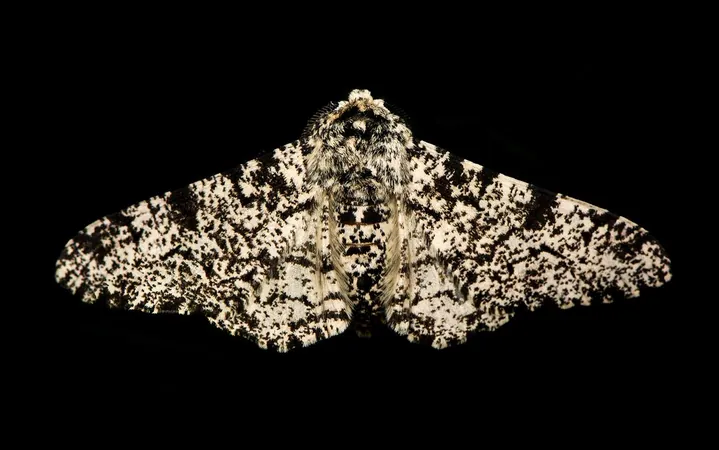
Reviving the Debate: The Beanbag Genetics Controversy in Evolution
2025-04-15
Author: Nur
Unraveling Life's Complexities
Life's intricacies are astounding, encompassing everything from microscopic cells to vast ecosystems. Biologists marvel at the interconnectedness within nature, prompting two main approaches to understanding it.
The Dichotomy of Evolutionary Thought
Historically, scientists have chosen one of two paths: either seek overarching principles governing evolution or embrace the chaotic randomness of life’s details. The iconic Charles Darwin laid the groundwork for natural selection, showcasing how variations within species lead to adaptation—this theory connects diverse organisms under a single evolutionary umbrella.
Conversely, some argue that life is too intricate to be distilled into universal laws. They emphasize that biology doesn’t lend itself to neat mathematical expressions, challenging the idea that a single concept can encapsulate complex behaviors like DNA scrambling in certain microorganisms or gene interactions influenced by environmental factors.
The Brawl Over Evolution's Soul
In recent years, tensions have risen in the evolutionary biology community, igniting debates around the very essence of the discipline. With groundbreaking discoveries in molecular and cellular biology, many argue for a pluralistic view of evolution, asserting that there isn't a singular approach but a symphony of processes at play.
The Beanbag Genetics Showdown
One of the most notable conflicts in evolutionary thought occurred sixty years ago during what became known as the 'beanbag debates.' This intellectual melee pitted the 'beanbag geneticists,' who relied on mathematical models to explain evolution, against those who believed this approach oversimplified and misrepresented the complexities of life.
The controversy ignited at a symposium celebrating the centennial of Darwin's *Origin of Species*, where biologist Ernst Mayr criticized the reductionist view of evolution. He argued that the simplistic 'beanbag' analogy—where genes are likened to beans tossed in a bag—fails to capture the dynamic interactions and intricacies of real organisms.
A Battle of Giants: Mayr vs. Haldane
Mayr's pointed critiques became a rallying cry for those who felt that mathematical models could not encapsulate the fullness of life’s complexities. In response, geneticist J.B.S. Haldane published 'A Defence of Beanbag Genetics,' asserting that the role of population genetics is crucial for understanding evolutionary processes.
Haldane emphasized that beanbag genetics focuses on fundamental evolution processes, capable of providing insights on how traits spread through populations, regardless of specific organismal details. He recognized Mayr's critiques yet maintained that population genetics provides a theoretical backbone essential for evolutionary study.
Evolving Perspectives on Evolution
Moving forward to the present day, the legacy of beanbag genetics continues to spark discourse, particularly as new discoveries challenge the traditional paradigms. Critics of mathematical models now call for a more nuanced understanding of evolutionary dynamics that accounts for the interaction of multiple evolutionary forces.
However, recent advancements in combining mathematical genetics with epigenetics illustrate the potential for these models to adapt and expand. For instance, findings about the Price equation have demonstrated the interdependence between genetic and epigenetic inheritance, revealing new evolutionary pathways.
Why Beanbag Genetics Matters
The ongoing relevance of beanbag genetics is profound. As formal mathematical theories continue to evolve, they provide vital frameworks for understanding biological diversity and guiding fields like conservation biology and crop science. By understanding these foundational concepts, we unlock the secrets of how life adapts and flourishes in an ever-changing world.
In essence, a comprehensive view of evolution requires both the abstract principles of beanbag genetics and the recognition of the fascinating complexities that define the living world. It's a rich tapestry where math and biology intertwine, leading us to a deeper appreciation of life's marvelous intricacies.



 Brasil (PT)
Brasil (PT)
 Canada (EN)
Canada (EN)
 Chile (ES)
Chile (ES)
 Česko (CS)
Česko (CS)
 대한민국 (KO)
대한민국 (KO)
 España (ES)
España (ES)
 France (FR)
France (FR)
 Hong Kong (EN)
Hong Kong (EN)
 Italia (IT)
Italia (IT)
 日本 (JA)
日本 (JA)
 Magyarország (HU)
Magyarország (HU)
 Norge (NO)
Norge (NO)
 Polska (PL)
Polska (PL)
 Schweiz (DE)
Schweiz (DE)
 Singapore (EN)
Singapore (EN)
 Sverige (SV)
Sverige (SV)
 Suomi (FI)
Suomi (FI)
 Türkiye (TR)
Türkiye (TR)
 الإمارات العربية المتحدة (AR)
الإمارات العربية المتحدة (AR)